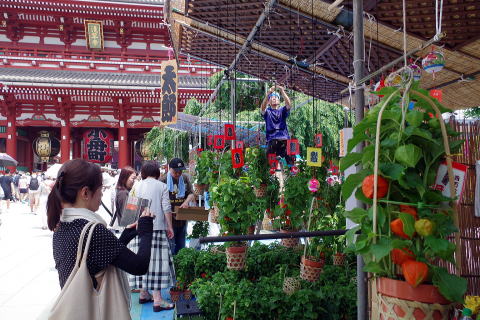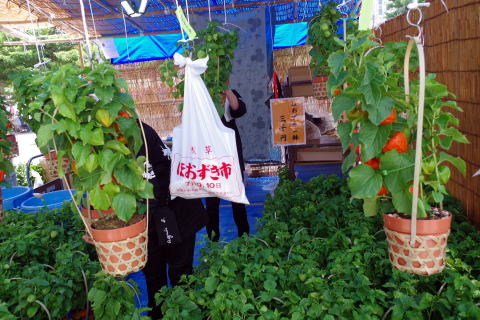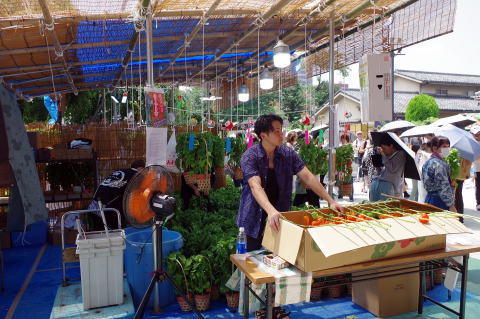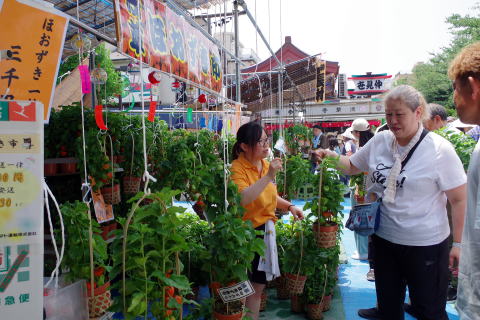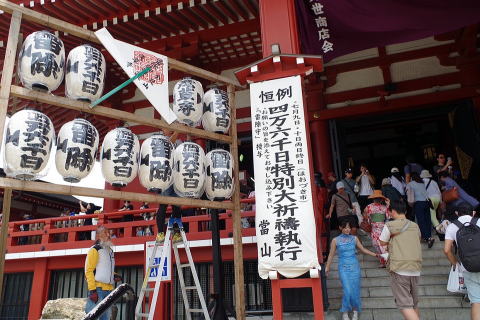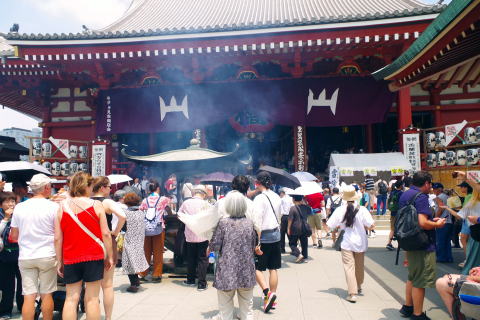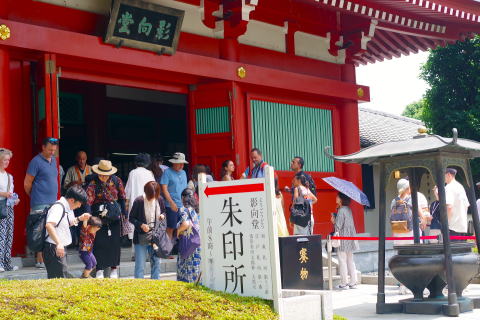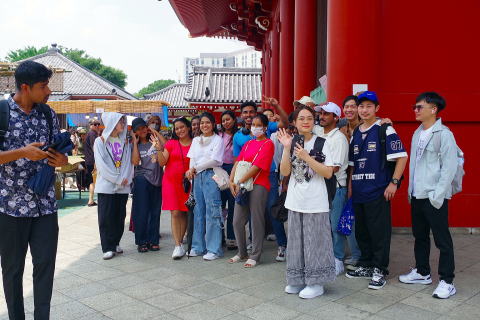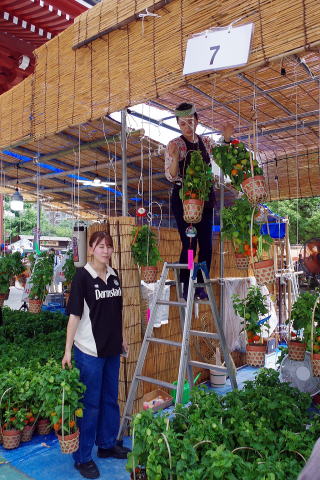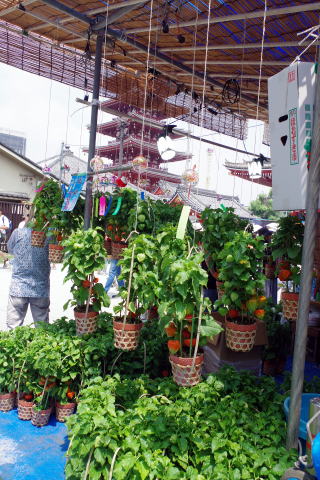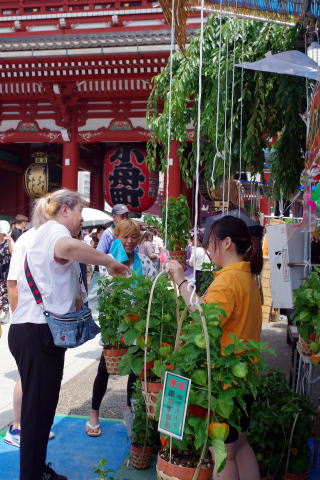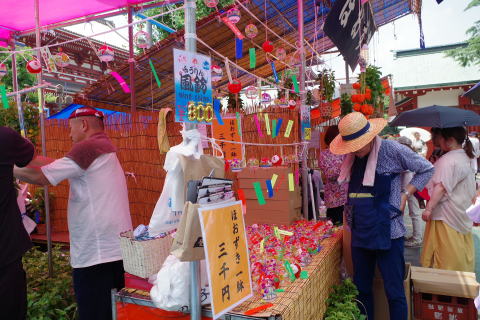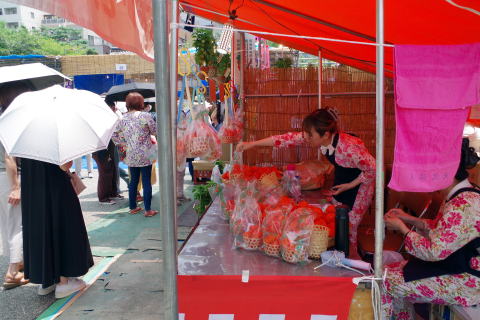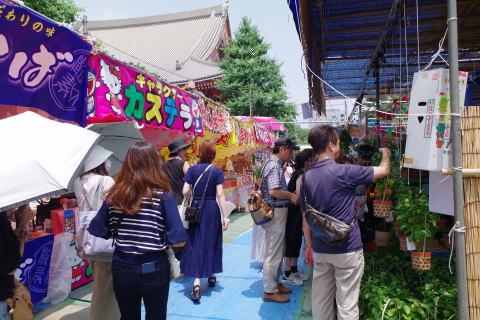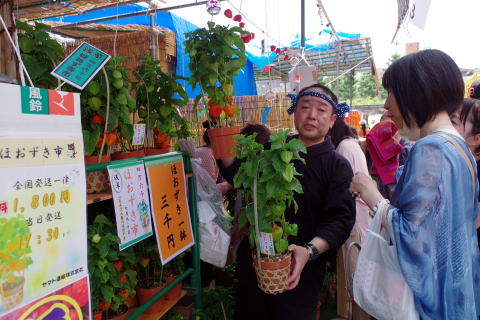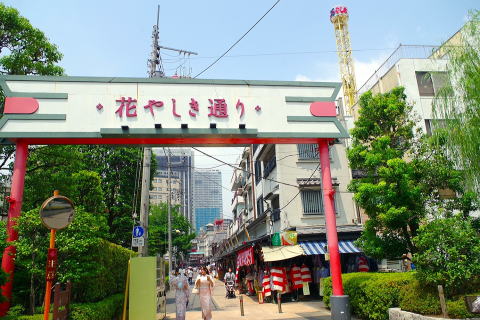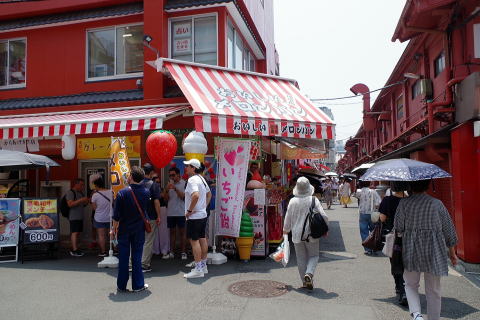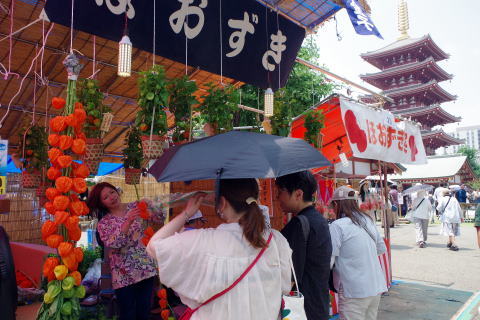
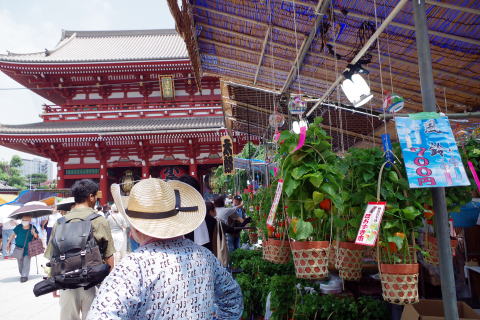
「ほおずき市」四万六千日(しまんろくせんにち)浅草 浅草寺
7月9日・10日、浅草寺境内を彩るほおずきの屋台は、浅草の夏の風物詩である。この両日は四万六千日の縁日であり、縁日にともなってほおずき市が催される。
平安時代頃より、観世音菩薩の縁日には毎月18日があてられてきたが、室町時代末期(16世紀半ば)頃から、「功徳日」といわれる縁日が設けられるようになった。功徳日とは、その日に参拝すると、100日、1,000日分などの功徳が得られるという特別な日を指す。功徳日は寺社によって異なるが、現在、浅草寺では月に1度、年に12回の功徳日を設けている。このうち7月10日は最大のもので、46,000日分の功徳があるとされることから、特に「四万六千日」と呼ばれる。この数の由来は諸説あり、米の一升が米粒46,000粒にあたり、一升と一生をかけたともいわれるが、定かではない。46,000日はおよそ126年に相当し、人の寿命の限界ともいえるため、「一生分の功徳が得られる縁日」である。
四万六千日の縁日の参拝は江戸時代には定着し、われ先に参拝しようという気持ちから、前日9日から境内は参拝者で賑わうようになった。このため、9日、10日の両日が縁日とされ、現在に至る。
"Ground Cherry
Market" 46,000 Days
On
July 9th and 10th, the ground cherry stalls decorating the grounds of Sensoji
Temple are a seasonal sight in Asakusa's summer. These two days are the 46,000
Days festival, and the ground cherries market is held in conjunction with the
festival.
Since
the Heian period, the 18th of each month has been the festival day for Kannon
Bodhisattva, but from around the end of the Muromachi period (mid-16th
century), festival days called "merit days" began to be set up.
Merit
days are special days on which worshippers can gain merit equivalent to 100 or
1,000 days. Merit days differ depending on the temple or shrine, but currently
Sensoji Temple has 12 merit days a year, once a month. Of these, July 10th is
the largest, and is particularly known as "46,000 days' worth of
merit" because it is said to bring about merit equivalent to 46,000 days.
The
custom of visiting the shrine on the 46,000-day festival day became established
during the Edo period, and the temple grounds would become bustling with
worshippers from the 9th, the day before, in the desire to be among the first
to visit. As a result, both the 9th and 10th came to be designated festival
days, and continue to be so to this day.
